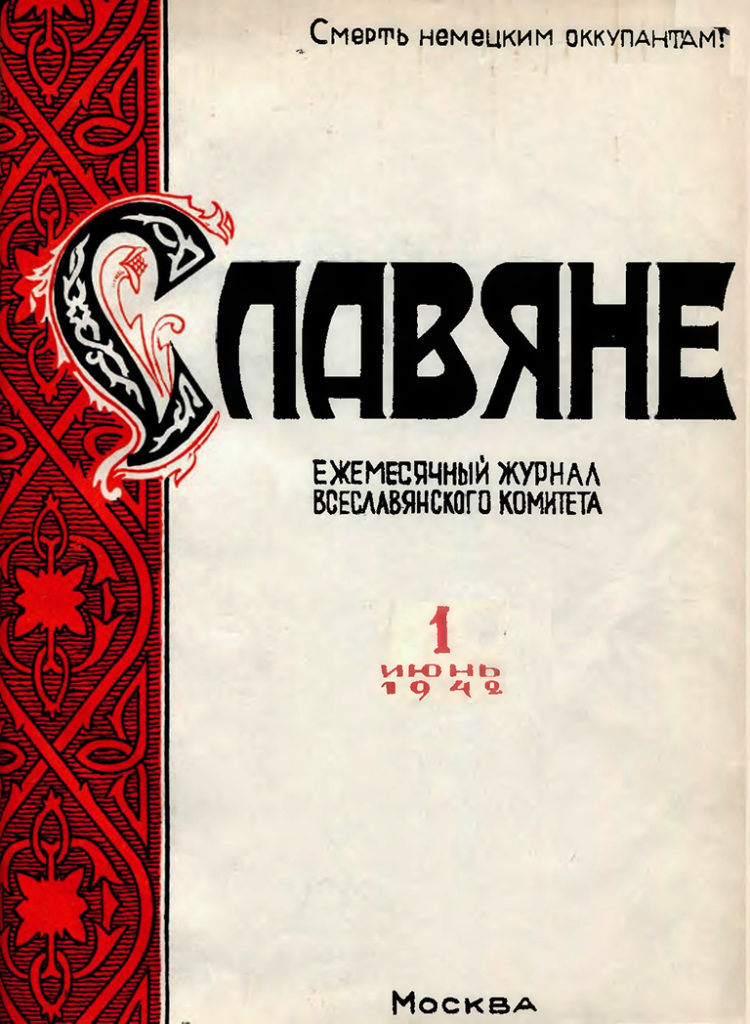Slaviane Digital Archive
Anti-fascist Soviet propaganda journal from WWII era
Founded in 1942 at the height of the Great Patriotic War by the All-Slavic Committee, a Soviet anti-fascist organization, Slaviane (Slavs) was a monthly journal that saw its mission as one of “rallying Slavic peoples together in alliance with all freedom-loving peoples to fight against Nazi Germany and its vassals.” The editors sought to achieve this mission by exposing the “predatory and rapacious policies of Hitlerites, their hate-filled program aimed at the elimination of Slavic peoples and their centuries-old culture.” Apart from its anti-Fascist and anti-Nazi platform, the journal also sought to cultivate and propagate among Slavic peoples a knowledge of their shared history, the role of Slavic peoples in world culture and civilization, as well as episodic coverage of the Slavic communities in such far-flung countries as the United States, England, Australia, New Zealand and elsewhere. In short, the journal became a unified platform for intellectuals and politicians from Slavic countries, with the aim of providing an intellectual outlet against Nazism based on Slavic historical and cultural solidarity.
Following the end of the War, the journal underwent significant editorial changes, switching its focus from defeating Nazism to coverage of life and culture in the Soviet Union. In the process it strove to increase distribution in Slavic countries as well as in the West, although with limited success. It ceased publication in 1958. The Slaviane digital archive provides researchers and students a unique collection that sheds light on an important aspect of Soviet propaganda production in a critical period of the Soviet Union’s history.
